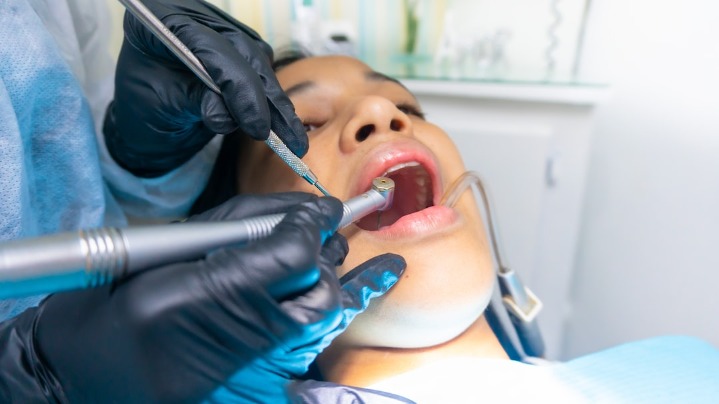
Dry Socket – Cause, Symptoms And Treatment
Dry Socket AfterTooth Extraction
Following the removal of a tooth, a blood clot will form in the socket where the tooth used to be. The blood clot helps the area heal by keeping the socket clean and stopping food from getting stuck. However, if this blood clot becomes dislodged, this is called a dry socket. This is more common after removing lower wisdom teeth than other teeth in the mouth.
What Is A Dry Socket?
Contents
A dry socket is a painful dental complication that can occur after tooth extraction. It happens when the blood clot that forms to protect the bone and nerves in the empty tooth socket fails to develop or is lost. A dry socket can result in severe pain and discomfort, ranging from throbbing and radiating pain to an unpleasant taste in the mouth.
The most common cause of dry sockets is inadequate post-operative care following a tooth extraction, such as not taking enough time for rest and recovery or not using gauze packs as instructed by your dentist. Smoking cigarettes, drinking alcohol, and using a straw are known risk factors for dry sockets, as these activities can disrupt the healing process. If left untreated, dry sockets can expose nerve endings which may lead to long-term effects, including jaw stiffness, facial swelling, and bad breath.
What Causes A Dry Socket?
A dry socket is a common complication that can occur after tooth extraction. It happens when a blood clot fails to form in the empty socket or if the clot that does form gets dislodged or dissolves too soon. This condition is marked by severe pain, bad breath, and an unpleasant taste in your mouth.
The blood clot can become dislodged, causing a dry socket by drinking through a straw, vigorous rinsing, coughing, sneezing, smoking, and drinking alcohol. All of these should be avoided for 48 hours following an extraction.
The exact cause of dry socket remains unknown, but some factors may increase your risk. Risk factors include smoking tobacco or marijuana, using birth control pills, having a problematic extraction procedure, and not following post-operative instructions from your dentist. People with poor oral hygiene are also at higher risk for developing dry socket as well as individuals who have had previous extractions and experienced this complication before.
What Are The Symptoms Of A Dry Socket?
The most common symptom of a dry socket is intense pain around the area where the tooth was extracted. This pain may be constant or intermittent and typically worsens when food particles enter the empty socket or when touching the area. Other symptoms may include an unpleasant taste in your mouth, bad breath, visible bone in your gums, swelling around your jawline or face, and even fever and headache.
Without a blood clot in your socket, your bone is exposed, causing constant pain which is throbbing and intense. The pain will be worse than when the tooth was first extracted and won’t be relieved by painkillers. This occurs within three days of removing your tooth and may also be accompanied by a foul odor.
What’s The Treatment For A Dry Socket?
The dry socket needs to be filled with a dressing to alleviate pain and assist with healing. This will need to be done by the person who extracted your tooth, either your dentist or oral surgeon. The pain relief after having your socket dressed is almost immediate, but if the pain returns, you may have to go back to have your socket dressed again. If pus is in your socket, your dentist may prescribe you antibiotics. Maintain good oral hygiene during the healing phase and follow your dentist’s instructions on rinsing your mouth with mouthwash or saltwater.
What Happens If You Leave A Dry Socket Untreated?
If you leave a dry socket untreated, it will be very painful and may become infected. The pain will continue if a dressing has not been placed. A dry socket can potentially get infected as it can easily trap food which can be very difficult to clean.
If you have a dry socket that won’t heal, even following your dentist’s instructions, it’s important to go back to your dentist. They will be able to advise you about what is the best treatment for you.


One Reply to “Dry Socket – Cause, Symptoms And Treatment”
i may have dry socket but im a little unsure cause the pain im having isnt that bad but it looks similar to the pic u have posted by this article.. is there anything i can do before i go to the dentist or should i just go just to be on the safe side? i didnt even realize there was a huge hole on the side i thought that they were gonna cut it out right on top.. i couldnt see the hole cause my cheek on the inside was swollen and covered over it..